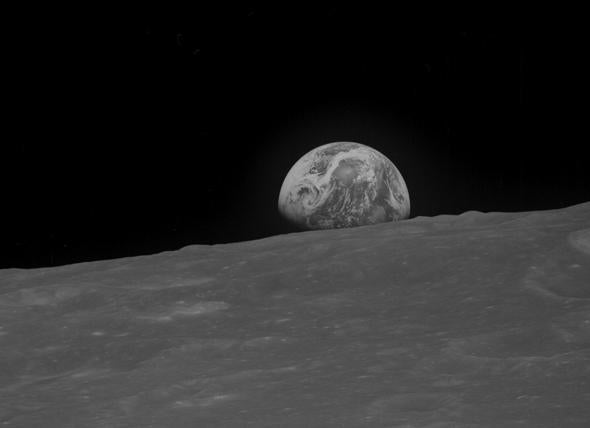If we can put a man on the Moon, why can’t we put 8,400 hi-res scans of the Apollo mission photographs taken by the astronauts themselves on Flickr?
Oh wait. We can. And Kipp Teague did.
Teague is a network and IT director at Lynchburg College, and he and I have two things in common: We’re both University of Virginia alumni (wahoowa!), and we’re both unabashed fans of the Apollo Moon missions. But where I will sometimes write about the missions and talk about how they’re real, he went way, way farther: He rescanned more than 8,000 original photographs taken by the astronauts using their chest-mounted Hasselblad cameras, creating a huge archive on Flickr showcasing the epic journey to the Moon and back.
Included are shots you’ve seen before, and many I bet you haven’t. I’m pretty familiar with the Apollo images, having spent many hours poring over the Apollo Lunar Surface Journal website, studying the images … but even so there are lots of photos I hadn’t seen before, or at least hadn’t noticed.
For example, look at this gorgeous shot of Goclenius, a 70 kilometer wide impact crater near the Moon’s equator:

Photo by NASA/Kipp Teague
WOW. This was taken in 1968 by the Apollo 8 crew, which didn’t land, but instead whipped around the Moon to test out the mission trajectory profile before the actual landing the next year. Look at the detail! The gullies cutting right across the crater on the floor are rilles, carved by flowing lava. The floor of the crater is flat, indicating to me that it was flooded with lava, which pooled inside. The rim of the crater shows slumping, too, landslides causing collapse of material for dozens of kilometers around it.
Pictures like that remind me that the Moon may be dead now, but it wasn’t always. It used to be a place of massive, violent geologic events.
Most people will of course be entranced more by the photos of the astronauts themselves. I easily found my favorite Apollo photo of all time: Al Bean standing on the Moon’s surface during Apollo 12, holding a regolith sample container:

Photo by NASA/Kipp Teague
I love the contrast, the glow, of this shot. The streaks on the left are scattered sunlight inside the camera, and you can see the reflection of Pete Conrad, who took this picture, on Bean’s helmet. Note the camera on Bean’s chest; that’s one of the Hasselblads used to take all these incredible photos.
As for why this is my favorite Apollo photo, I described it a few years ago. I had been neck deep in debunking the truly ridiculous claims that the missions were faked and was getting heartburn over it. But going through the lunar photos online I found this one, and something about it—the composition, the artistic qualities of it—caught my eye. And then a realization swept over me, giving me chills and literally raising the hair on the back of my neck:
This is a picture of Al Bean. It’s a man in a spacesuit. It’s a man in a spacesuit holding a sample container. It’s a man in a spacesuit holding a sample container on the Moon. Standing on the Moon. It’s a man standing on the freakin’ Moon!
Slowly, a wave of awe, joy, and happiness washed over me—a glow of warmth that stays with me to this day. From that moment on I didn’t let the conspiracy theorists bug me very much. They were wrong, but even more importantly, they didn’t matter. In the long reach of history, they will be forgotten, gnats buzzing around a monumental edifice.
That is the true joy of these photographs. They were taken when we dared to explore beyond the comforts of our home, when we looked skyward and thought, “We can go there.” These photos can inspire the next generation of explorers, those who aren’t afraid to leave safe harbors for worlds beyond.
We did it before. We can do it again.
